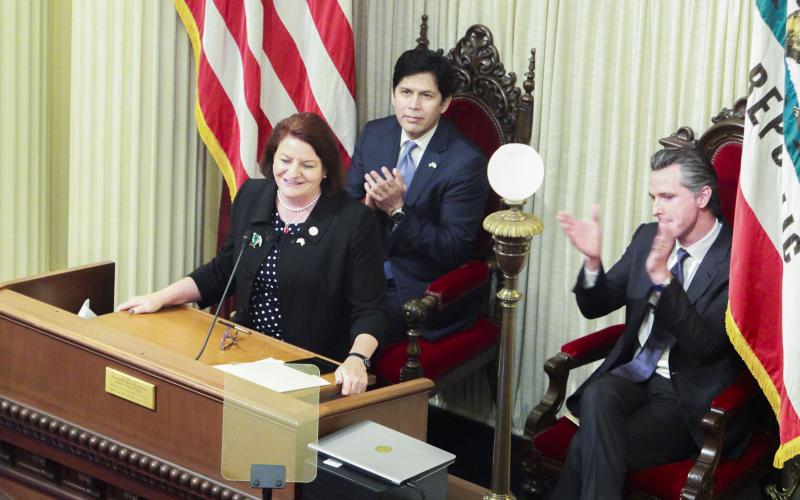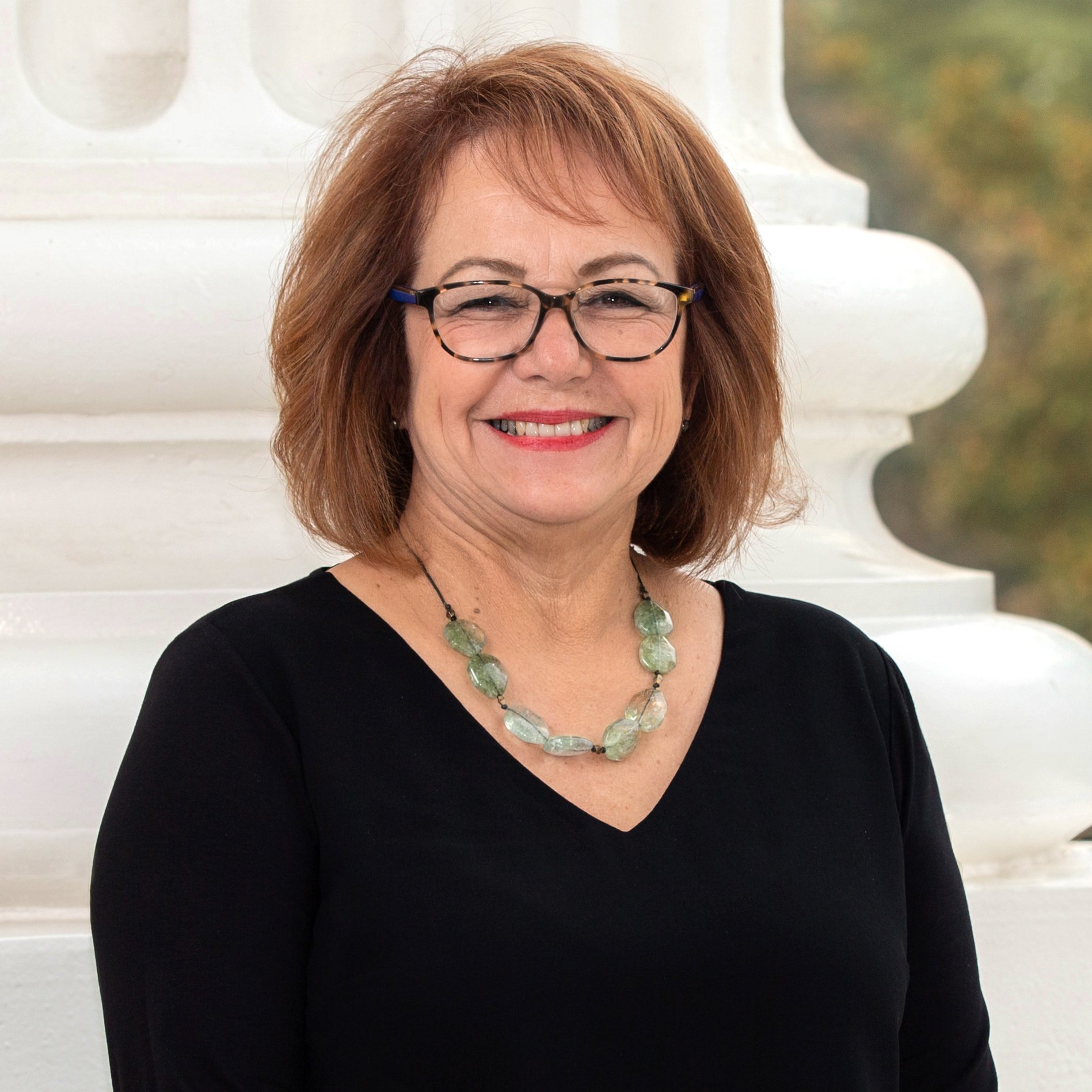California lawmakers kicked off 2019 with more than 2,000 bills cascading into print and ended the year with a dramatic 3 a.m. rally on Saturday. The session was delayed in part from a woman tossing a substance appearing to be blood onto the Senate floor while screaming "That's for the dead babies."
In many ways, it was one for the record books.
The new giga-majority Democratic dominance over the Legislature also created an unprecedented playing field, disrupting the traditional negotiation process for amending bills.
“I've never seen anything like this in 20 years,” said Jim Houston, administrator of the California Farm Bureau Federation. “Generally, we go in and maybe get a half a loaf, maybe a quarter… This year, there was no give and take.
Now that the dust has settled in Sacramento, here are a few takeaways from a look back on one of the state’s most active legislative years.
The headliners and what’s next
A handful of major bills have consumed much of the attention throughout the year. When it comes to agriculture, Senate Bill 1 would have been one of the more impactful in recent years. It proposes codifying federal environmental protections into California law. The bill also carried the legislative might that comes with the Senate President Pro Tempore as author.

Senate President Pro Tempore Toni Atkins, D-San Diego
“When the Pro Tem’s bill comes up,” said Louie Brown, an attorney representing ag groups for Kahn, Soares and Conway, “it's hard to stop a bill of that nature.”
San Diego Senator Toni Atkins had appeared that night to be leaning toward the safer bet of shelving her measure as a two-year bill. SB 1 does lend itself to being broken down into several smaller bills individually tackling clean water, clean air, labor and health issues.
A narrower Trump resistance bill, AB 454, focused specifically on enshrining the Migratory Bird Treaty Act into California law and, after an exemption for agriculture, it successfully passed the Legislature and is currently awaiting the governor’s signature.
On Saturday, hours after the Legislature had passed SB 1, Governor Gavin Newsom pledged to veto the bill.
The window may have closed for SB 1. If it is brought back and passed next year and if Trump is not reelected in November, Atkins would again be pushing through what she’s considered her most challenging legislation. But this time it would be enacted in early 2021, while two weeks later a new president would be sworn in, rendering the measure obsolete.
Houston said in the debates around SB 1 and the bills on pesticides, “science has now been appropriated by the politics.” He added that the current approach to policymaking needs “to find a way to have an objective discussion about science.” Houston assumed the issues at play in the Trump resistance bill will likely continue as policy discussions next year.
Days before SB 1 passed, the Legislature had also swept headlines across the country when it approved Assembly Bill 5. Once signed into law, the labor bill is expected to have a significant impact on independent agricultural truckers, many of whom will be reclassified as standard employees. There will be at least one referendum, as well as ballot initiatives, follow-up bills, new arguments in an ongoing lawsuit and plenty of new legal action to follow once Newsom adds his signature.
“I fully expect that there will be more bills trying to better clarify (the initial Dynamex court decision) moving forward next year,” said Brown. “We'll just have to do what we can to be at the table to try to get those owner operators included and any other elements of the industry that might have been left out.”
Pesticide bans
Throughout the legislative session, the ag industry watched carefully as four bills proposing bans on pesticides sprouted up and disappeared.

Sen. Maria Elena Durazo, D-Los Angeles
Senator Maria Elena Durazo of Los Angeles led the most contentious and emotional battle. Her bill, SB 458, proposed an immediate ban on the insecticide chlorpyrifos. The bill would buy time for the California Environmental Protection Agency to proceed with its two-year regulatory review process. The first committee hearing for the bill focused heavily on the science, pitting an epidemiologist specializing in autism against an epidemiologist formerly with Dow Chemical. Durazo reiterated throughout her debates that chlorpyrifos was a “child brain-damaging pesticide.” The argument continually swayed urban lawmakers, as well as Central Valley Senator Melissa Hurtado of Sanger, who beat out a Republican for her seat in November.
Yet Durazo’s bill was outdone by Governor Newsom, when his administration announced the cancellation of chlorpyrifos in May. SB 458 quietly died two weeks later in the Senate Appropriations Committee. Durazo, however, had strong thoughts on the measure. She resurrected the ban the following month by cannibalizing another bill, SB 86, refining it to act as insurance backing up the administration’s efforts. In July, Durazo pulled that bill ahead of a committee vote, announcing that it would be a two-year bill.
Yet it is unlikely for the bill to return. By the time it could be enacted in 2021, the administration’s cancellation process will be close to completed.
Another pesticide ban was pulled that same day. Also a “gut-and-amend,” this bill proposed a ban on the use of glyphosate on state property. Its previous version specifically targeted schools for the ban. The author, Assemblymember Al Muratsuchi of Torrance pulled the bill, AB 916, before its first hearing on the expanded scope, promising a return as a two-year bill.
Houston attributed the momentum behind AB 916 to the media attention around the glyphosate lawsuit earlier in the year.
A bill proposing a statewide ban on second-generation rodenticides, meanwhile, floated longer into the legislative year. Exemptions were made for agriculture and other industries. Perhaps under the heavy opposition of pharmaceutical companies, however, Assemblymember Richard Bloom of Santa Monica pulled the bill in August and later promised to return to the measure in January
Water and climate funding
On the heels of the failed Proposition 3 water bond last year, freshman Senator Melissa Hurtado took up the cause to fund Central Valley water infrastructure. Her Senate Bill 559 would have dedicated $400 million to fixing the Friant-Kern Canal, which has long been suffering severely reduced capacity due to subsidence.
Through several hearings, Hurtado had fought off arguments that the federal government should be paying for the fix. Surprising many, the bill even came out its first Appropriations Committee with the full $400 million-proposal intact. Yet the second one doomed it.
SB 559 never made it out of Assembly Appropriations, likely due to its large price tag, according to California Citrus Mutual. Assemblymember Devon Mathis of Visalia, a co-author on the bill, said the move was simply “freshman hazing.”
Also in the area of water funding was a bill that would have set up a bond for the 2020 ballot. The $4 billion-measure proposed in SB 45 would have allocated $190 million for protecting agricultural lands from climate risks. Boosting the priorities set by CDFA and the Newsom administration, the money would have supported small- and mid-sized farms with grants promoting soil health and water use efficiency practices. About half of those funds would have gone towards restoring ag lands to natural conservation areas.
The proposal encompassed a broad range of climate-related issues, with a title that attempted to capture it all: The Wildfire Prevention, Safe Drinking Water, Drought Preparation and Flood Protection Bond Act.
SB 45 was brought before a hearing in April and never moved again until August, when the bill took new amendments. Then the Rules Committee on September 10 placed it in a position for rapid ascension. Perhaps lost in the last-minute push for SB 1, the co-authors never brought the bill up for a floor vote.

Senator Ben Allen, D-Santa Monica, was an author on the SB 45 bond and SB 54 on plastic waste.
Nevertheless, a nearly identical ballot initiative filed with the attorney general’s office lives on. The Legislative Analyst’s Office has reviewed the proposal, which is almost double the amount proposed in SB 45, at $7.9 billion. Despite that hefty sum, the initiative would add just $10 million more for agricultural programs.
Along similar lines, AB 409 proposed $2 million for climate adaptation tools, resources and trainings to help farmers and ranchers adapt to climate change. It died in Appropriations.
With the Sustainable Groundwater Management Act starting to take effect in January, Houston expects to see more lobbying activity in Sacramento from the local entities impacted by the new restrictions.
Housing
While the housing crisis consumed much of the energy in both houses early in the year, AB 1783 presented a seemingly innocuous proposal to streamline the approval process for farmworker housing.
Yet, as Agri-Pulse reported in August, the bill would roll back existing funds for farmworker housing by adding a provision that excludes H-2A guest workers and would require farmers to hand over the keys to a third party. Despite heavy opposition from ag groups like the California Farm Bureau Federation and the Western Growers Association, the bill passed several committees and eventually both houses, with the author, Assemblymember Robert Rivas of Hollister, falling back on a provision that the program would be completely voluntary. The bill is awaiting the governor’s signature.
Reducing plastic packaging
SB 54 and its counterpart AB 1080 did not come up for a floor vote on the last day of the Legislature, despite signals that Newsom was prepared to sign them. The bills would have mandated a 75% reduction in single-use plastics by 2030 through recycling, composting and alternative sourcing.
California Citrus Mutual (CCM) notes the authors added more than 200 amendments during the last week. The final-hour revisions, along with logistical challenges for implementing the measures, likely contributed to the bills’ demise, writes CCM Director of Government Affairs Alyssa Houtby.
The bills are expected to return in January, however, and Louie Brown is hopeful he can work with the authors and the governor’s office to exempt the on-farm packaging used to move raw materials from the field to processing. He said that type of packaging is already highly recyclable and is never intended to reach the consumer.
Safe drinking water
In the first half of the legislative session, ag groups stood behind a bill to establish the Safe and Affordable Drinking Water Fund. The measure proposed a revenue stream through fertilizer fees and a water fee of less than a dollar per month spread across all Californians.
The issue was a top priority for the governor and the legislature. By partnering on the bill, the industry was able to negotiate a cap on the rising fees the State Water Resources Control Board has levied onto farmers to pay for drinking water cleanup and staffing costs.
But levying new taxes was already a toxic issue for legislators in swing districts. The eventual compromise, signed into law through SB 200, tapped into the General Fund and, in a controversial twist, from the Greenhouse Gas Reduction Fund.
The laws to come in 2020
The governor has plenty more ag-related bills to consider ahead of the October 13 deadline.
“It's not over yet,” cautioned Brown. “We're waiting to see how governor Newsom reacts to this large number of bills that are on his desk.”
Included in the bills are measures to:
- Ban fur sales (Newsom has already signed a ban on fur trapping),
- Create a California rural development agency and a CDFA economist to report on impacts from the Sustainable Groundwater Management Act,
- Establish CDFA as the USDA liaison for regulating industrial hemp in California,
- Add the CDFA secretary to the California Broadband Council,
- Add smog checks for diesel trucks,
- Penalize employers who withhold an immigrant’s legal documents “to enslave victims,”
- Streamline a program offering incentives for farmers to flood fields in winter,
- Deploy stream gages to better monitor water flows and fish populations,
- Better protect wild and domestic horses from slaughter,
- Grant alligator farmers another year to sell products,
- Boost glass recycling, with support from the Wine Institute,
- Help California comply with the federal milk marketing order,
- Reduce fuels for wildfire prevention, which now exempts growers from trimming back orchards near power lines,
- And allow the harvest and consumption of roadkill.


